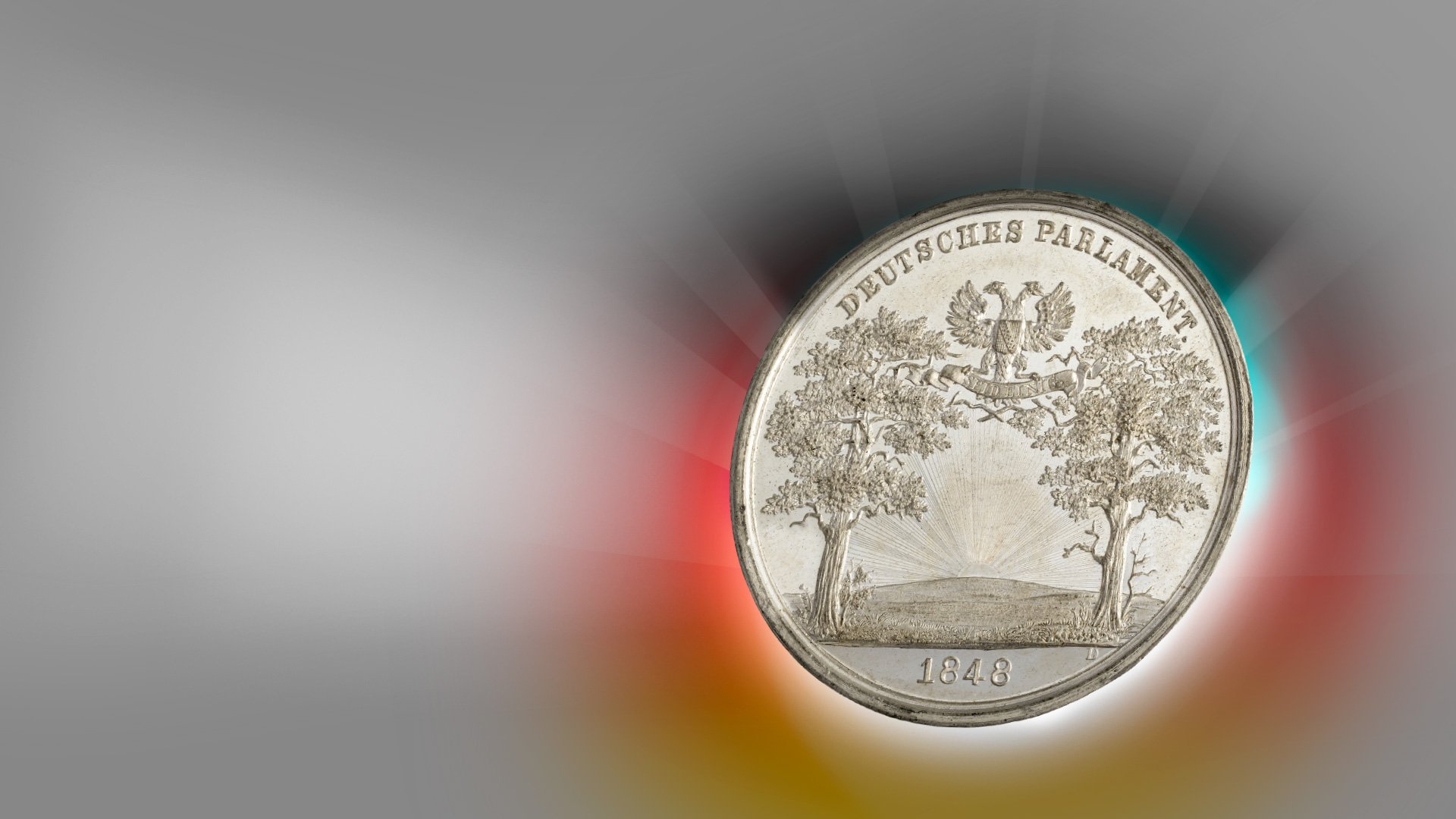
1848 When Germany dreamed democracy
A revolution on coins and medals
A year like no other
Germany's political system may seem self-evident to most people, especially younger ones. To understand this popular rule we call democracy, it is useful to know its foundations.
175 years ago, a movement was formed, supported by various strata of the population, which turned against the autocracy of kings and princes. The guiding principles of the revolutionaries and the old sovereigns at that time are shown by the coins and medals of the time.
They are a completely different medium than history books, since they are original visual and written sources that show the essentials in a highly concentrated and comprehensible way.
A burning throne, heroes and symbols
Prelude: February Revolution in Paris
In late February 1848, a revolution broke out in Paris, resulting in the abdication of King Louis-Philippe. On February 24, 1848, protesters carried the royal throne out of its palace to the highly symbolic spot where the Bastille, the former prison, had stood, and burned it in front of the July Column, which commemorates the 1830 Revolution.
Martyr of the Democracy Movement
Robert Blum advocated for liberal and democratic ideas in many speeches before thousands of listeners. He was an influential figure in the workers' movement and called for the creation of a republic. In 1848, he was elected Vice President of the National Assembly in Frankfurt.
When news of the uprising in Vienna arrived in October, he traveled there, gave speeches, and participated in the defense of Vienna against the advancing imperial troops. After the fall of Vienna, Blum was imprisoned there, disregarding his parliamentary immunity, and sentenced to death by the court. On November 9th, he was executed by firing squad.
Oak Trees in Morning Light
The German medal artists did not capture the general movement with images of barricade fights, unlike the graphics also shown in the exhibition. Instead, in the Augsburg medal workshop Drentwett, an emblem for the movement was created with the image of two oak trees in the morning light, the uncrowned imperial eagle, and the connecting ribbon "SEID EINIG" ("BE UNITED"), expressing a hope of that time.
Failed or Successful?
Under pressure from the regional princes who did not want to give up their governments, the revolutionary uprising failed in 1849. However, the revolutionaries had still achieved something. New constitutions had emerged, and certain fundamental rights were now present. Movements for workers' rights and women's rights had emerged. 50 years later, the first medals were created that showed the past struggles in the sense of political parties. Even today, political parties derive themselves from this time.
All the pieces are presented in an exhibition catalog. The contributions of various authors introduce the sometimes dramatic events that gave rise to these pieces.
Previous Exhibitions

















